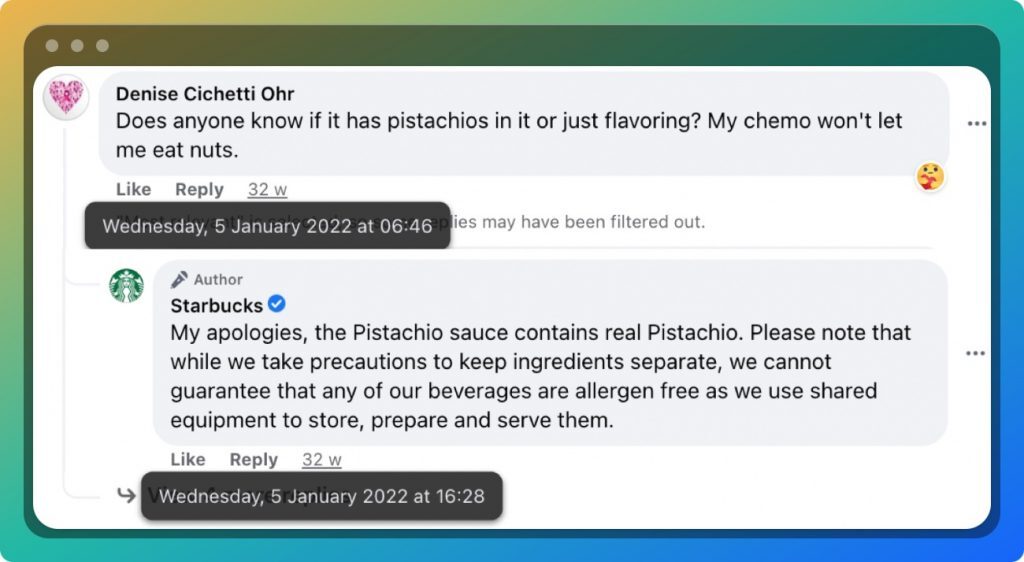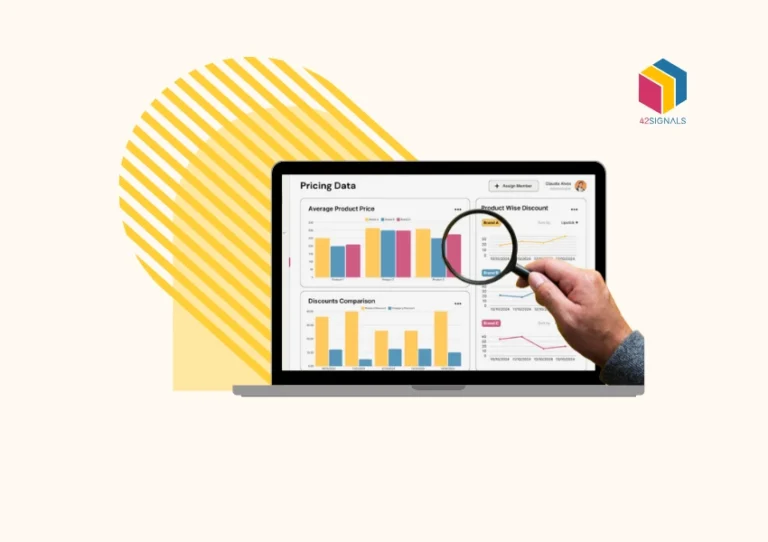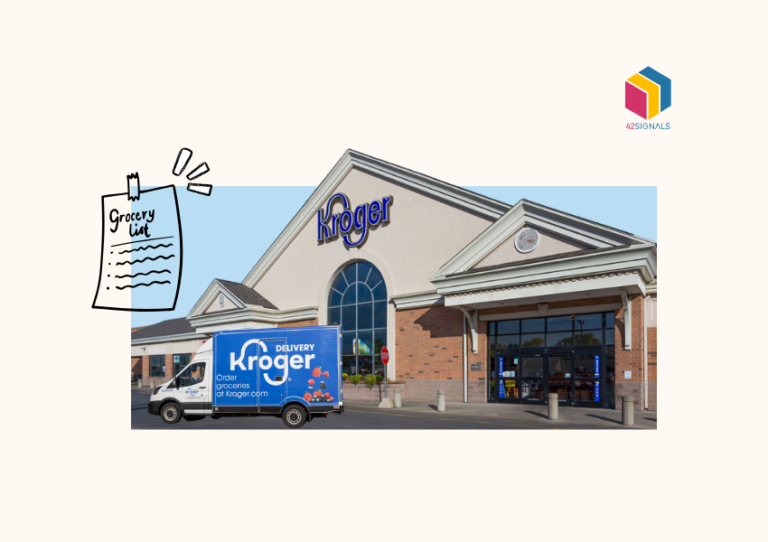What is Review Monitoring?
Review monitoring is the systematic process of tracking and analyzing customer feedback across various online platforms to gather insights that can be strategically used to improve business operations and customer satisfaction. Through the use of specialized software tools or manual reviews, businesses can collect data from multiple review sites and social media channels. This practice encompasses several key activities:
- Aggregating reviews from different sources in one centralized system.
- Analyzing sentiment to gauge overall customer satisfaction.
- Identifying patterns and trends in customer feedback.
- Detecting and addressing critical issues promptly.
- Engaging with customers by responding to both positive and negative reviews.

Image Source: appfigures
Effective review monitoring enables companies to maintain a comprehensive understanding of their public perception, anticipate potential crises, and make data-driven decisions. By promptly addressing customer complaints and recognizing areas of improvement, businesses foster stronger customer relationships and enhance their overall reputation.
The Importance of Customer Feedback in Innovation
Customer feedback serves as a cornerstone for innovation in any business landscape. Companies operate in highly competitive environments, and understanding customer needs allows for better alignment of products and services. By meticulously monitoring reviews, businesses are equipped with real-time data that reflect the collective voice of their target audience.
This feedback loop enables companies to make informed decisions on updates or new features, ensuring that their offerings remain relevant and compelling. In essence, listening to customers not only fosters a sense of trust and loyalty but also positions businesses as responsive and adaptable entities.
Moreover, detailed feedback from customers can highlight areas of improvement that might not be apparent from an internal perspective. The unfiltered reviews often contain valuable insights into user experiences, preferences, and pain points. Innovating based on such feedback can lead to substantial breakthroughs, whether in enhancing existing products or developing new ones.
By integrating customer input into the innovation process, companies can achieve a higher degree of user satisfaction and market success. This practice underscores the pivotal role of customer feedback in driving continuous improvement and competitive advantage.

Image Source: tidio
Tools and Technologies for Review Monitoring
Monitoring customer reviews requires precision and efficiency, leveraging advanced tools and technologies to manage feedback effectively.
1. Sentiment Analysis Software
These tools analyze the emotions behind customer reviews, categorizing them as positive, negative, or neutral. They help businesses understand customer satisfaction and identify areas for improvement.
2. Text Analytics Platforms
Text analytics platforms analyze textual content to extract meaningful patterns and trends. They analyze customer reviews to identify common complaints, frequently mentioned issues, and popular product features.
3. Social Media Monitoring Tools
These tools track brand mentions across social media platforms in real time, allowing businesses to respond promptly to feedback and address concerns as they arise.
4. Review Aggregators
These services compile reviews from multiple platforms into one central location, streamlining the review monitoring process. They provide a comprehensive view of customer feedback across various channels.
5. Customer Relationship Management (CRM) Systems
CRM systems integrate review data to maintain a detailed customer history. This integration helps businesses personalize their responses and track improvements over time.
42Signals’ Voice of Customer Analytics

42Signals’ Voice of Customer Analytics stands out as a robust tool in review monitoring. It offers several features tailored to businesses aiming to enhance their customer satisfaction:
Real-Time Feedback Collection:
42Signals gathers customer feedback from multiple sources in real time, ensuring that businesses receive the most up-to-date insights.
Sentiment Analysis:
The platform leverages sophisticated algorithms to analyze the sentiment and emotions in customer reviews, providing a deeper understanding of customer feelings.
Insights Dashboard:
A user-friendly dashboard displays key metrics, trends, and insights. This visualization aids businesses in making data-driven decisions.
Actionable Recommendations:
Based on the collected data, 42Signals provides actionable recommendations to address common issues and improve customer satisfaction.
Analyzing Customer Sentiment via Review Monitoring

Image Source: G2
Natural Language Processing (NLP) Techniques
Utilize NLP algorithms to examine the textual content of reviews. NLP can identify key phrases, categorize sentiments (positive, negative, neutral), and even detect nuanced emotions such as frustration or satisfaction.
Keyword Analysis
Regularly monitors frequently occurring terms and phrases within customer reviews. Keywords related to product or service quality, customer service responsiveness, and specific features provide insights into customer priorities and pain points.
Time-series Analysis
Track sentiment over time to identify patterns. This approach helps businesses understand whether changes in policy, product updates, or service adjustments are having an immediate or delayed impact on customer sentiment.
Competitive Benchmarking
Compare customer sentiment with that of competitors. Analyzing competitor reviews can reveal industry standards and pinpoint areas where a company excels or lags behind, enabling strategic adjustments.
Automated Sentiment Alerts
Set up automated systems to send alerts when there are significant shifts in sentiment. Prompt responses to sudden drops in sentiment can prevent larger issues from developing.
Visual Data Representation
Utilize dashboards and visual tools to represent sentiment data. Graphs, heat maps, and trend lines make it easier for stakeholders to interpret complex datasets and formulate strategic decisions.
Integration with Customer Feedback Systems
Synchronize review sentiment analysis with broader customer feedback mechanisms, such as surveys and direct feedback channels. This integrated approach ensures a holistic view of customer satisfaction.
Predictive Analytics
Use sentiment data to predict future customer behavior. Predictive analytics models can determine potential churn rates or identify customers likely to upgrade, guiding proactive customer engagement strategies.
Focus on Actionable Insights
Prioritize insights that lead to actionable strategies. Businesses should develop robust plans to address identified issues, thereby directly improving customer experience based on sentiment analysis.
Integrating Feedback into Product Development
Integrating customer feedback into product development is pivotal in creating products that truly resonate with the market. By systematically analyzing reviews, companies can pinpoint specific areas that necessitate improvement. This involves recognizing patterns such as recurring complaints, frequently suggested enhancements, or features that garner the most praise. Companies must establish a comprehensive review monitoring mechanism that captures feedback from multiple sources, including customer reviews, social media mentions, and direct customer communications. Once gathered, this feedback should be categorized and prioritized based on factors like impact on customer satisfaction, feasibility of implementation, and alignment with the company’s strategic goals.
Product teams should adopt agile methodologies to incorporate these insights swiftly. Regularly scheduled sprints and feedback loops allow teams to iterate and refine product features in alignment with customer needs and expectations. Stakeholders from various departments, such as marketing, sales, and customer support, should be included early in the process to provide a holistic view of customer sentiment. This cross-functional collaboration ensures that the feedback is not only understood but also acted upon efficiently.
Furthermore, transparency in how feedback is handled can enhance customer trust and loyalty. Communicating back to the customers about the changes made based on their input can foster a sense of participation and validation. Modern tools and software can facilitate this integration by automating parts of the feedback collection and analysis process, thereby streamlining efforts and reducing the potential for human error. Ultimately, integrating customer feedback into product development helps companies stay competitive, adapt to changing market demands, and build a happier, more engaged customer base.
Case Studies: Brands Successfully Using Review Monitoring
Zappos: Customer Service Excellence

Image Source: closesimple
Zappos has built its reputation on exceptional customer service, an area where review monitoring plays a critical role.
- Direct Response to Feedback: Zappos actively monitors customer reviews across various platforms. They ensure prompt responses to both positive and negative feedback, providing solutions and thanking customers for their insights.
- Adaptive Strategies: Reviews are analyzed regularly to identify recurring issues or suggestions. This data is then used to make informed decisions about product offerings, website navigation, and shipping processes.
- Employee Training: Insights derived from customer reviews are incorporated into employee training programs to enhance the quality of service. Employees are trained to empathize with customers and resolve their issues effectively.
- Building Trust: By showcasing genuine responses to reviews, Zappos fosters a sense of trust and reliability, encouraging more customers to share their experiences.
Starbucks: Engaging with Customers
Starbucks utilizes review monitoring to engage with its customer base and enhance the in-store experience.

Image Source: juphy
- Real-time Engagement: Starbucks employs review monitoring tools to get real-time feedback. This allows them to address issues swiftly, be it about menu items, store ambiance, or staff behavior.
- Customization and Innovation: Reviews often highlight customer preferences and trends. Starbucks uses this data to experiment with new flavors and products, ensuring they meet the evolving tastes of their clientele.
- Community Building: By acknowledging customer feedback publicly, Starbucks builds a sense of community. They often incorporate customer suggestions into their product lineup, making customers feel valued and listened to.
- Store Performance: Review monitoring enables Starbucks to evaluate the performance of different stores. Metrics derived from reviews help in identifying high-performing locations and those needing improvement. Action plans are then developed to enhance the overall customer experience at underperforming stores.
Both Zappos and Starbucks exemplify how effective review monitoring can lead to improved customer satisfaction and loyalty while driving strategic decisions.
Overcoming Common Challenges in Review Monitoring

Image Source: competitors.app
Businesses face several challenges in review monitoring. Understanding these challenges and learning how to effectively address them is crucial for maintaining a positive customer experience.
1. Volume of Reviews
The sheer number of reviews can be overwhelming. Businesses often struggle to manage a high volume of feedback efficiently.
How to Overcome
- Automated Tools: Utilize automated review monitoring tools to sift through large volumes of reviews quickly.
- Prioritization: Implement a system to prioritize which reviews need immediate attention based on specific criteria like star rating or keywords.
2. Negative Reviews
Negative reviews can tarnish a brand’s reputation if not managed properly. They require tactful handling to mitigate potential damage.
How to Overcome
- Prompt Responses: Always respond to negative reviews promptly and professionally to demonstrate concern and willingness to resolve issues.
- Corrective Actions: Take actionable steps to address the problems mentioned and communicate these actions to the reviewer.
3. Lack of Resources
Small businesses may lack the resources to dedicate to thorough review monitoring.
How to Overcome
- Outsourcing: Consider outsourcing review monitoring to specialized agencies.
- Efficient Tools: Invest in cost-effective review management software to streamline the process.
4. Multichannel Reviews
Reviews can come from numerous platforms, complicating the monitoring process.
How to Overcome
- Unified Dashboard: Implement a unified dashboard to track reviews from all platforms in one place.
- Centralized Communication: Centralize responses to ensure consistent and uniform customer service across all channels.
Conclusion
Businesses understand the importance of review monitoring to build a satisfied, loyal customer base. It allows companies to quickly address concerns, improve products/services using customer insights, and manage negative reviews to showcase commitment to satisfaction.
42Signals, an advanced review monitoring solution, helps by aggregating reviews, highlighting positive feedback, analyzing trends, measuring initiative effectiveness, ensuring regulatory compliance, and facilitating targeted interventions.
Experience its transformative power and schedule a demo today – visit 42Signals to start improving customer satisfaction and driving business growth.







